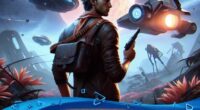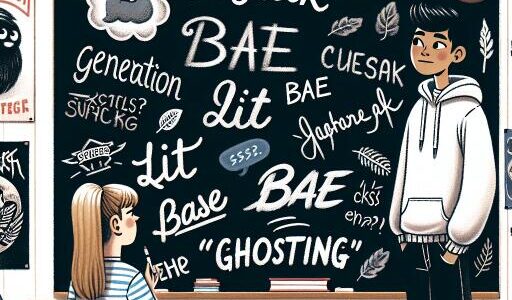Embracing the World: Real-time Descriptions for Enhanced Vision
The realm of colors and textures, once elusive for those with vision impairments, is becoming increasingly accessible through innovative technology that narrates the visual world captured by a camera. This groundbreaking software is paving the way for individuals with blindness or low vision to not only access their environments more efficiently but also to engage more fully with their surroundings.
This tool, referred to as WorldScribe, has been crafted by dedicated researchers from the University of Michigan. This pioneering technology is making its debut at the ACM Symposium on User Interface Software and Technology in Pittsburgh.
WorldScribe operates by employing generative AI language models to understand camera images and deliver text and audio descriptions in real time. This feature empowers users to quickly grasp their environment’s intricacies. Designed for adaptability, the tool can modify its descriptive detail based on user inputs or how long an object remains within the camera’s view. Moreover, it intelligently modulates its volume to suit various sound environments, ensuring clarity in bustling areas like crowded streets or loud venues.
A demonstration of this innovation will occur on October 14, with a comprehensive presentation of its capabilities scheduled for October 16, highlighting its recognition as a standout at the conference.
One participant in the WorldScribe trial, Sam Rau, shared insights into the transformative impact of this tool on the everyday experiences of those with vision impairments: “For us, it really changes the way we interact with our surroundings. Although I can’t visualize images, the tool painted a vivid picture of the world, revealing colors and textures inaccessible otherwise.”
Rau further explained, “Typically, creating a mental picture of our surroundings demands considerable effort. But with this tool, information is instantaneous, allowing us to focus on just being rather than piecing together our environment. Words can’t capture the magnitude of this breakthrough for us.”
During the trial phase, Rau utilized a headset, integrating a smartphone, to navigate the research environment. The phone’s camera relayed images wirelessly to a server, which then promptly produced text and audio descriptions of observed objects: laptops, papers, televisions, and artworks were all instantly accounted for.
This dynamic system allows descriptions to evolve in correspondence with the objects within the camera frame, giving precedence to those nearby. Objects glanced at quickly received brief descriptions, whereas prolonged observation provided greater detail about arrangements and specific items. Notably, the software adjusts its descriptive level by switching between three diverse AI language models to cater to different visual durations and complexity: YOLO World for swift, simple depictions, GPT-4 for detailed narratives, and Moondream for moderate intricacy.
“Current assistive technologies, while innovative, often focus on singular tasks or mandate turn-by-turn interactions, like taking a photo to receive a result,” remarked an assistant professor involved in the study. “Offering rich, comprehensive descriptions for live experiences represents a significant leap forward in accessibility.”
Excitingly, WorldScribe can execute user-directed tasks and answer queries—enhancing its practical utility. For example, it can prioritize describing objects specifically requested by users. Nonetheless, some testers noted challenges, such as difficulty detecting certain small objects like eyedropper bottles.
Rau noted the tool’s current form is somewhat cumbersome for constant use, though the vision of integrating it into smart glasses or wearable technology holds immense potential for daily application.
The creators are actively pursuing patent protection while seeking collaborations to further refine and commercialize this transformative technology, ensuring that the richness of the physical world becomes a shared experience for everyone.









